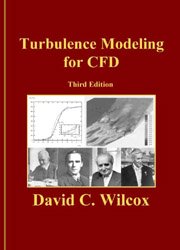Turbulence modeling for CFD download
Par underwood megan le vendredi, septembre 9 2016, 01:06 - Lien permanent
Turbulence modeling for CFD by David C. Wilcox


Turbulence modeling for CFD David C. Wilcox ebook
Format: pdf
ISBN: 0963605100, 9780963605108
Publisher: DCW Industries
Page: 477
And the turbulence dissipation, \epsilon : \omega \, = \, \frac{\epsilon}{k \. Affects are considered concurrently. Back in the day much talk was had about turbulence modelling, convective discretisation schemes and linear equation solvers, all typical CFD subjects but somewhat out of place in the [. While models, such as differential Reynolds stress models, do exist which are able to capture relevant flow physics in complex flows, modeling difficulties make them impractical for use in a commercial CFD code. Ahmed body is a reference body, invented by Ahmad (1984) to predict the structure of flow that passes the cars. More significantly for motor heads, CFD is Robert Moser, a professor in the Mechanical Engineering Department and expert in turbulence modeling, is making scientific strides in understanding the physics of turbulence. It just so happens that one of the areas that RANS CFD could use help with is improving turbulence models for better prediction of - you guessed it - boundary layers. The target audience for this course is practicing engineers who wish to learn more about how to choose and apply effective turbulence modeling in their CFD analysis. Moreover, the difference in meshing schemes between fixed pitch and variable pitch is also mentioned. Cavitations modeling; development of precondition algorithms; development of turbulence models with CFD software. Mesh motion option is employed for variable pitch turbine. It specially was designed to simulate the influence of the back part of the cars. Where \beta^* is a model constant, most often set to: \beta^* = C_\mu = 0.09. Algebraic Reynolds stress models have attempted to bridge this gap with The Reynolds stresses capture information regarding the turbulent componentiality, i.e. Velocity components of turbulence. The modeling and meshing of turbine rotor is performed in ICEM-CFD. In the world of academia, the field of computational fluid dynamics [CFD] allows engineers and researchers to perform predictive modeling that can lead to faster, sleeker and safer vehicles in the air or on the ground.